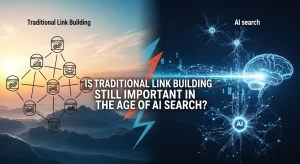Table of Contents
ToggleThe hours and efforts invested in writing an article, only to see it dive in search engine rankings, can be a critical experience, especially when none of its content appears in AI summaries. Sometimes it feels as if the internet has turned its back on one of these articles. That is exactly when semantic SEO strategy comes into play as a savior, helping the article gain the visibility and recognition that it deserves.
Why AI Needs a Different Kind of Content
Search engines used to depend mainly on matching keywords and counting backlinks to rank content. Now, AI-based platforms demand context, connections, and clarity. They do not simply “index” words; they have meaning. That means your content has to carry the structure of a conversation; everything should be clear, connected, and easy for a machine to pick out the right sentences.
The FAQ and Schema Layering Approach
Content is like a library:
- Main FAQ Page — The connection desk, where core questions are answered in short, direct summaries.
- In-Depth Articles — Back frames, where detailed explanations are stored for those who want to delve deeper.
Each set of frequently asked questions ought to include:
- A clear heading derived from the question.
- The answer should begin with a direct response that contains two to three sentences.
- The answer should offer additional details only after making its key point.
- AI-generated answers need to link to related questions so that the AI will follow the thread of interrelated questions.
Making the Structure AI-Friendly
Formatting matters, and thus use headings, short paragraphs, and flows that emulate the natural question-and-answer format. This is helpful not only to readers but also to AI tools, as they can extract answers without confusion. An important point is to consider the use of a content optimization checklist.
Such a checklist will remind one to:
- Check the heading hierarchy.
- Add schema markup.
- Keep answers concise up top.
- Verify all internal links work.
Once your structure is placed, bring in the right support. Reliable content marketing tools can generate schema, check readability and grammar, or even see how AI might interpret the content before it goes public.
From Structure to Strategy
When content is said to be AI-ready, it is not presenting the question to the real recipient. AI serves only as the mediator.
Here is where the whole AI SEO strategy that merges structure, schema, and intent matching becomes one plan. If done well, your answers will find their way into AI chats, summaries, and voice search results, all without feeling forced or mechanical.
Wrapping It All Up
If the content needs to speak to people and machines, you need an AI SEO agency who will do just that. AdsRole LLC masters the art of mapping your ideas, implementing schema, and weaving conversational flow around them so your expertise can be showcased.










